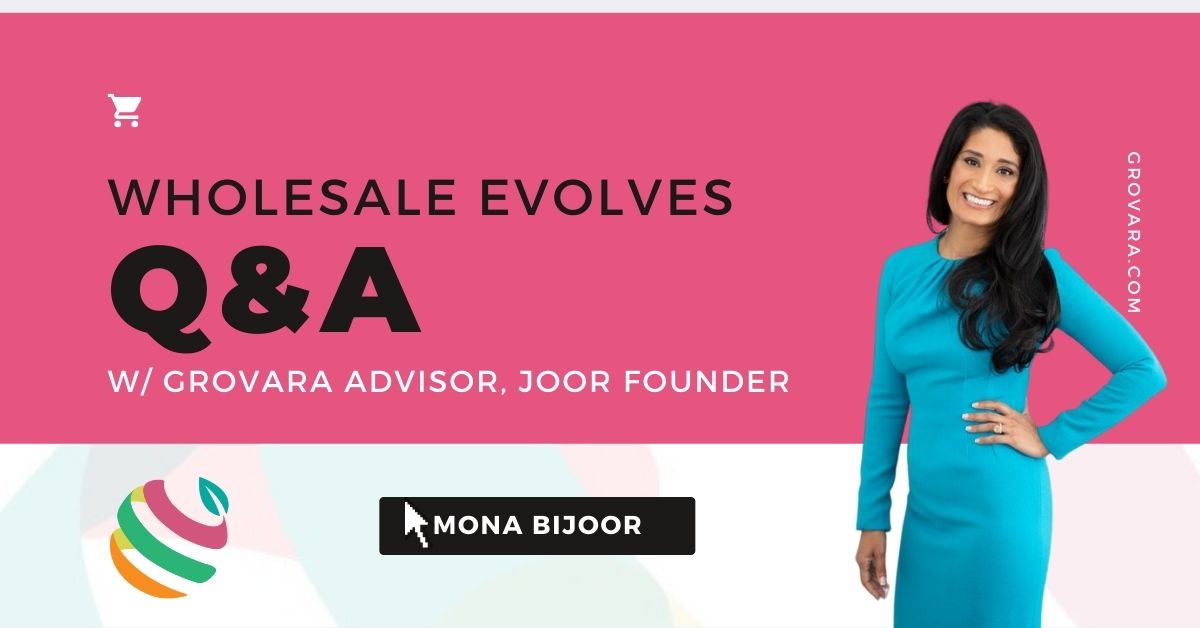What Brands Need To Know About Online B2B in The Post-Pandemic World
Q&A with Mona Bijoor, Founder of Joor & Grovara Senior Advisor
The e-commerce explosion of the last 18 months means there is no turning back. The opportunities in B2B are especially ripe.
B2B made up 83% of the $25.4 trillion in global ecommerce sales in 2018. By now, only 6% of B2B buyers do not currently use online marketplaces and 75% of B2B procurement spending is projected to occur within an online marketplace over the next five years.
We sat down with Mona Bijoor, the founder of online fashion marketplace Joor and Grovara advisor – to find out why the future is now for global wholesale.
Is D2C really a threat to the future of wholesale?
In 2020 we saw the emergence of brands experimenting around what it means to get noticed in very crowded markets with new players emerging constantly. In fashion, we saw Zara and Madewell selling via other e-tailers illustrating that wholesale can be valuable even for vertically integrated brands. We saw Casper and Quip selling at Nordstrom and Target. We also saw Clorox and Honeywell selling via wholesale marketplaces such as Grovara to expand their reach in international markets.
There is hope for wholesale but significant change must happen. Brands are becoming even more selective with respect to their distribution points. Brands are looking for retail partners that give them direct control over their brand and product positioning.
Selling wholesale presents the opportunity to reach broader markets, stress less about opening new retail doors, and increase profitability. If the pandemic showed us anything, it illustrated that multi-branded retailers must evolve their old playbooks — wholesale requires constant innovation and out of the box thinking in order to compete.
What does omnichannel mean post-pandemic?
Omnichannel is all the touchpoints that the end-consumers can engage with a brand. Of course, this includes engaging with the brand in a store, on a website, and a mobile app. Omnichannel also includes a global marketplace presence, selling on social media platforms and partnering with last-mile delivery services. Doing it all in a cohesive way, where all channels are connected and can interact with each other seamlessly – this is Omnichannel selling in 2021.
What other industries are ripe for global wholesale marketplaces?
Any product that is sold at a multi-branded retailer. This ranges from construction supplies, pet products, beauty supplies, and supplement products.
What do brands need to consider when thinking about international expansion?
Brands should consider three criteria. First, are they on the right platform — meaning are they sitting next to the best brands? Second, does the platform offer the best-in-class software and customer service? Third, does the platform offer data analytics and reporting tools that they can’t get elsewhere?
What are keys to driving volume growth on wholesale marketplaces?
On Grovara, it means sending out samples, sharing selling data that allow retailers to make strategic decisions, and partnering on marketing opportunities within key regions around the world. It is important to remember that international business is still built on the backs of personal relationships. Contracts are less meaningful in the international realm so partnering with the right platforms and people is important.
How are virtual sales and reach — the kind made possible by wholesale platforms — changing global commerce?
A platform such as Grovara allows brands to get to scale and distribution much faster than they would if they were to do it alone. When there is so much noise in the consumer world today, it is critical to be on a wholesale marketplace. Grovara provides significant network effects giving brands easy access to the best global retailers.
